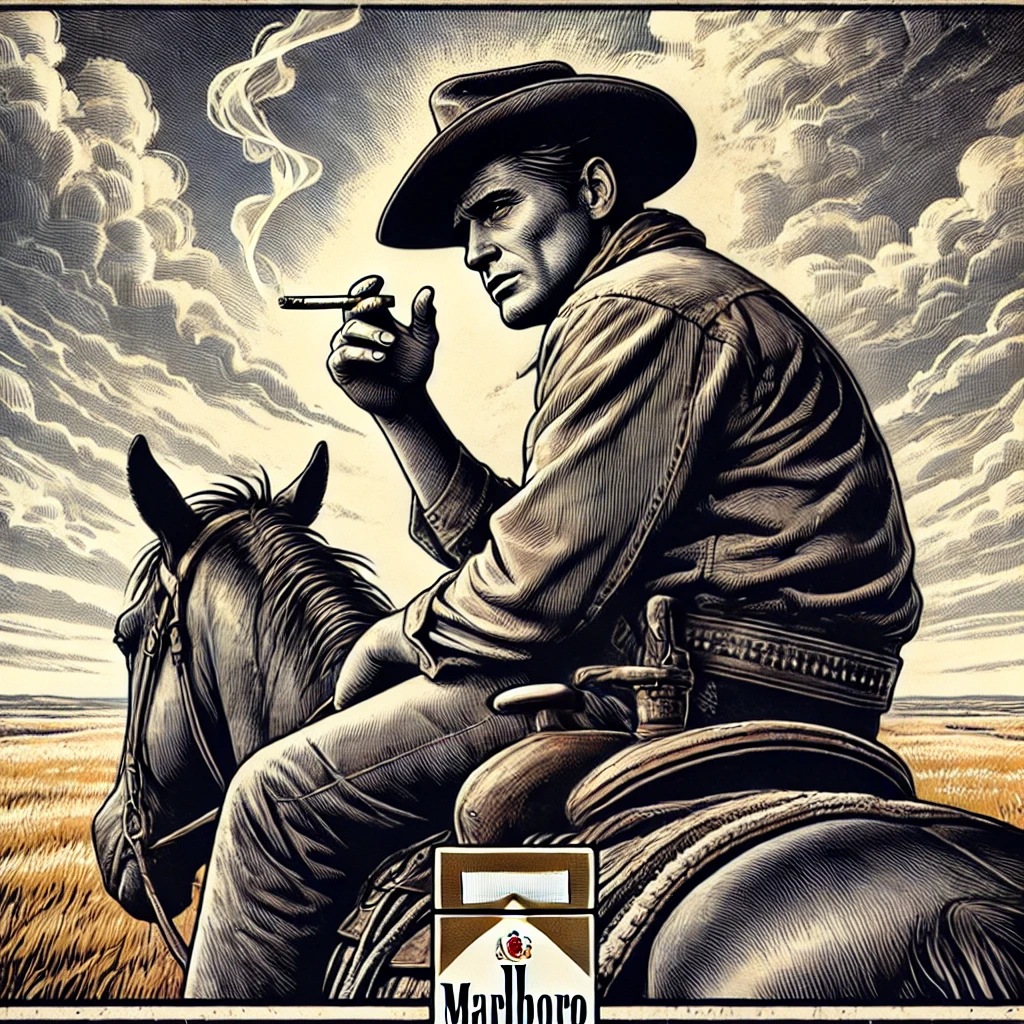GOTSMOKES.CO
- Canadian Cigarettes at Unrivaled Prices!
- Hassle-Free Shopping, and Prompt Delivery
- Comprehensive, Authentic and Competitive

He was rugged, stoic, and as American as the wide-open plains. The Marlboro Man, a cigarette advertising icon born in the 1950s, became one of the most recognizable symbols of masculinity and independence worldwide. For decades, his image sold more than just cigarettes; it sold a lifestyle—a fantasy of freedom, strength, and adventure.
But behind the alluring facade lies a story of marketing genius, controversy, and tragic irony. In this article, we’ll uncover the peculiar truth behind the Marlboro Man, from his inception to his cultural impact and eventual downfall.
The Marlboro Man wasn’t always the rugged cowboy we know today. In fact, Marlboro cigarettes were initially marketed as a product for women in the 1920s, complete with the tagline, “Mild as May.” It wasn’t until the 1950s, when cigarette companies faced increasing scrutiny over health concerns, that Marlboro sought to rebrand itself.
Philip Morris, Marlboro’s parent company, teamed up with advertising agency Leo Burnett to transform the brand’s image. The cowboy was chosen as a symbol of rugged masculinity, independence, and timeless appeal. By associating Marlboro cigarettes with the cowboy lifestyle, the brand tapped into deep cultural archetypes of the American West.
Initially, the campaign featured real-life cowboys as well as actors. The simplicity of the imagery—men on horseback, vast open skies, and a single cigarette in hand—struck a chord with consumers. Within a year, Marlboro’s sales skyrocketed by 300%.
Read more about the Marlboro Man’s origins here.
The Marlboro Man didn’t just sell cigarettes; he became a cultural icon. At the height of his popularity, his image transcended advertising, shaping perceptions of masculinity and Americana around the globe.
The Marlboro Man wasn’t confined to American billboards. His image was exported worldwide, making him a universal symbol of strength and self-reliance. In countries as far away as Japan and Brazil, the Marlboro Man represented a dream of independence and adventure.
The Marlboro Man also redefined what it meant to be a man in post-war America. At a time when traditional gender roles were shifting, his rugged, silent strength resonated deeply. The campaign portrayed smoking not just as a habit but as a badge of manhood.
The Marlboro Man’s influence extended into movies, music, and even satire. Parodies of his image often highlighted the absurdity of associating cigarettes with health and freedom, but they only cemented his iconic status further.
Learn more about his global influence here.
While the Marlboro Man epitomized vitality and health in ads, the reality for some of the actors who portrayed him was far from glamorous. Several Marlboro Men, including Wayne McLaren and David McLean, suffered from smoking-related illnesses, leading to a tragic irony.
Wayne McLaren, one of the Marlboro Men, became an outspoken anti-smoking advocate after being diagnosed with lung cancer. Before his death in 1992, he publicly condemned the very product he once promoted.
David McLean, another Marlboro Man, also succumbed to smoking-related cancer. His family later filed a lawsuit against Philip Morris, claiming the company had knowingly endangered its actors.
These tragedies underscored the disconnect between the fantasy portrayed in advertisements and the real-life consequences of smoking. The Marlboro Man’s legacy became a haunting reminder of the dangers of glamorizing harmful habits.
Discover the actors’ stories here.
By the 1990s, the Marlboro Man’s reign began to wane. The decline of smoking as a socially accepted habit, combined with increasing regulations on cigarette advertising, spelled the end of his dominance.
As evidence mounted about the health risks of smoking, governments worldwide implemented stricter advertising laws. In 1999, the U.S. banned outdoor tobacco advertising, effectively eliminating the Marlboro Man from billboards.
Public perception of smoking also shifted dramatically. What was once seen as a symbol of freedom and sophistication became associated with addiction and disease. The Marlboro Man, once an icon of strength, came to represent the deceptive nature of cigarette marketing.
Organizations like the Truth Initiative launched campaigns targeting the tobacco industry’s manipulation of public perception. The Marlboro Man became a cautionary tale in the battle against smoking.
Read about the fall of cigarette advertising here.
Despite the decline of cigarette advertising, the Marlboro Man’s image endures as a cultural artifact. His story raises important questions about marketing ethics, personal responsibility, and the power of imagery.
The Marlboro Man remains one of the most successful branding efforts in history. His image continues to be studied in marketing and advertising courses as a masterclass in building emotional connections with consumers.
While the campaign’s success is undeniable, its legacy is complicated. The Marlboro Man contributed to an increase in cigarette consumption, but it also sparked critical conversations about the impact of advertising on public health.
Today, the Marlboro Man represents a bygone era of advertising, one where imagery and storytelling held unparalleled sway. His legacy, both celebrated and criticized, continues to captivate and provoke.
The Marlboro Man is more than an advertising icon—he’s a symbol of an era, a reflection of cultural values, and a reminder of the power and pitfalls of marketing. From his rise as a cowboy hero to his fall amid controversy and changing attitudes, his story is both fascinating and cautionary.
As we look back on the Marlboro Man, we see not just the rugged cowboy who sold cigarettes but also the complexities of selling a dream. His legacy invites us to question the messages we consume and the truths behind the images we idolize.